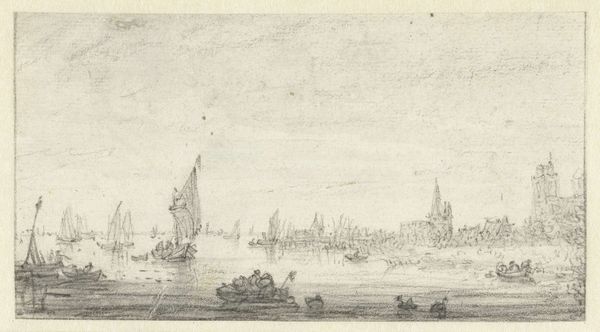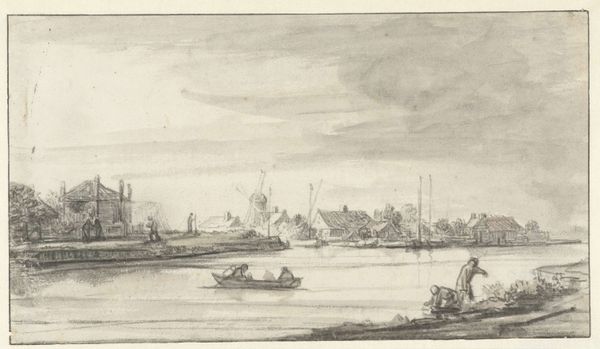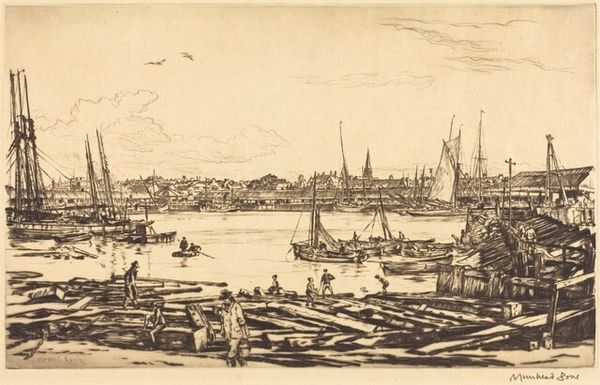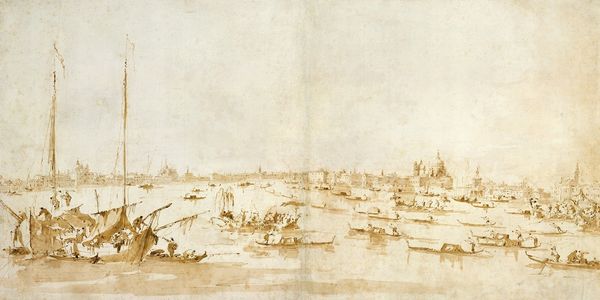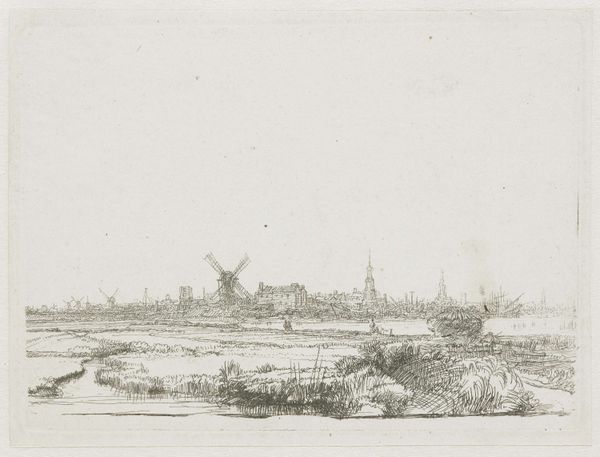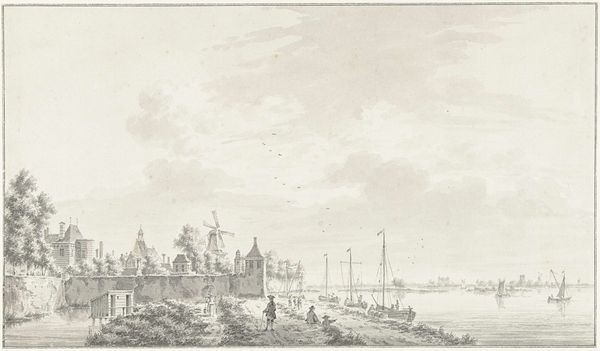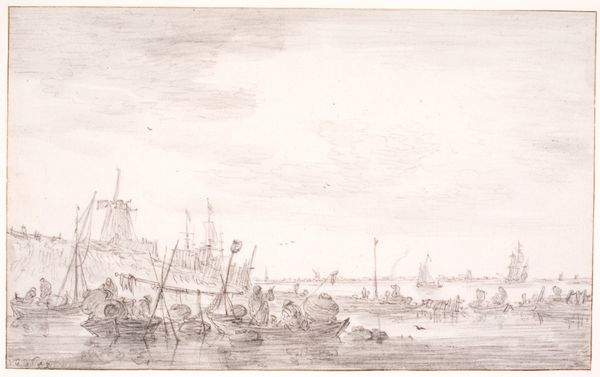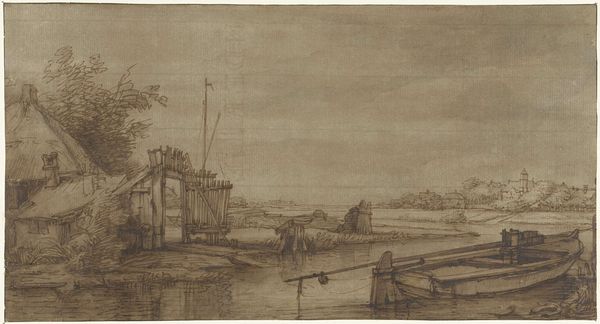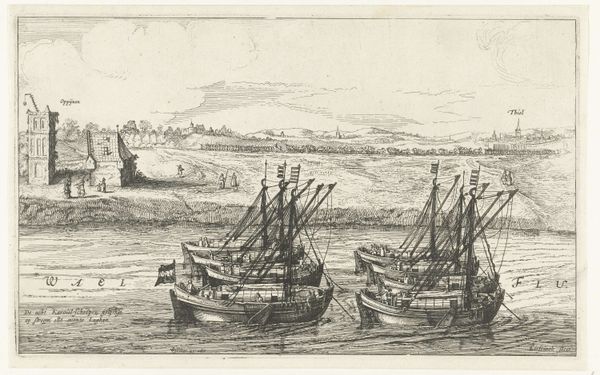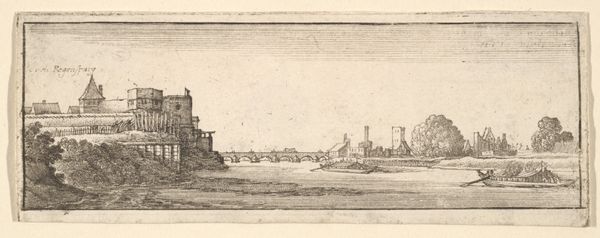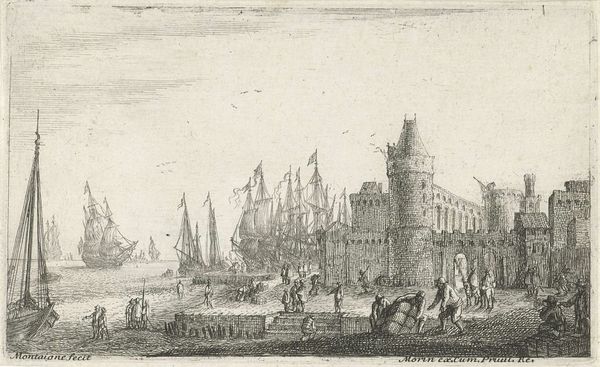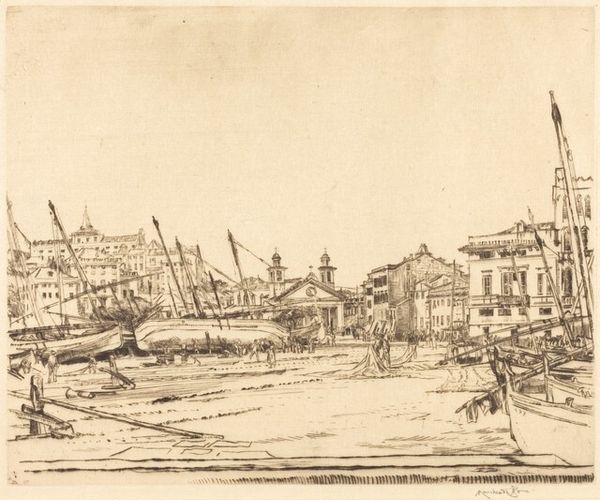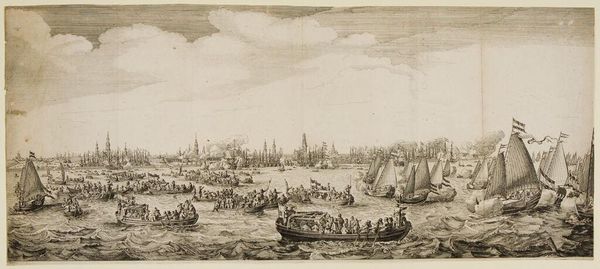
drawing, etching, pen
#
drawing
#
dutch-golden-age
#
etching
#
landscape
#
pen
#
cityscape
#
realism
Copyright: Public domain
Curator: Here we have Rembrandt van Rijn's "View over the Amstel from the Rampart," dating back to approximately 1650. It’s rendered with etching and pen. Editor: It has an understated yet peaceful atmosphere. I’m immediately drawn to the careful placement of light and shadow, which, even in this small drawing, create such depth. Curator: Absolutely. And if you look closer, you'll notice Rembrandt's adept handling of materials. Etching and pen allowed for fine detail, while also capturing a sense of spontaneity in the mark-making. How he balanced those aspects speaks to the level of craft happening at the time. The work, presumably commissioned for Amsterdam's upper merchant class, speaks to the values and interests of the city's ruling families. Editor: Indeed. Waterways and windmills often function as Dutch symbols. The presence of these iconic features emphasizes the nation's dependence on trade and the ability to innovate with technology like windmills. Those symbols became heavily intertwined with the nation's sense of identity. Curator: Good point. Furthermore, notice how the city stretches back into the distance; Rembrandt captured the dynamism of 17th century Amsterdam, a place defined by global trade. Editor: And the high vantage point might represent Holland’s global outlook at that time—a cultural position surveying international trends. The river connects locals to the wider world, signifying accessibility, progress, and financial ascendency. Curator: It is fascinating to look closely at how this single image manages to synthesize so many material elements that underscore production, craftsmanship, and Dutch trade systems. The conditions under which such pieces are made shape both the subject and reception. Editor: Thinking about it that way adds so much to its appeal. I now look at those etched lines with an entirely different point of view, imagining how Dutch Golden Age citizens received such imagery and internalized those important, visual concepts.
Comments
No comments
Be the first to comment and join the conversation on the ultimate creative platform.
